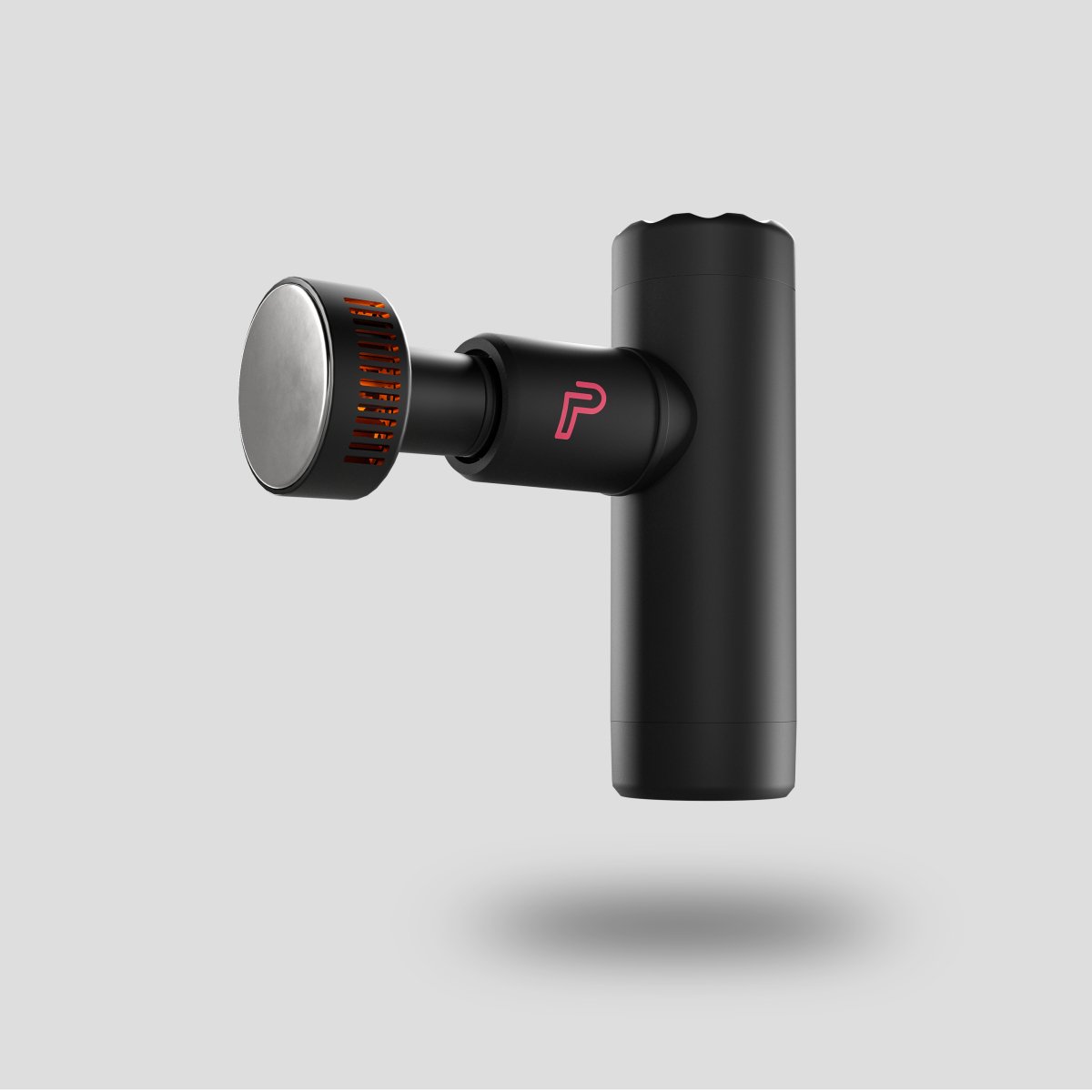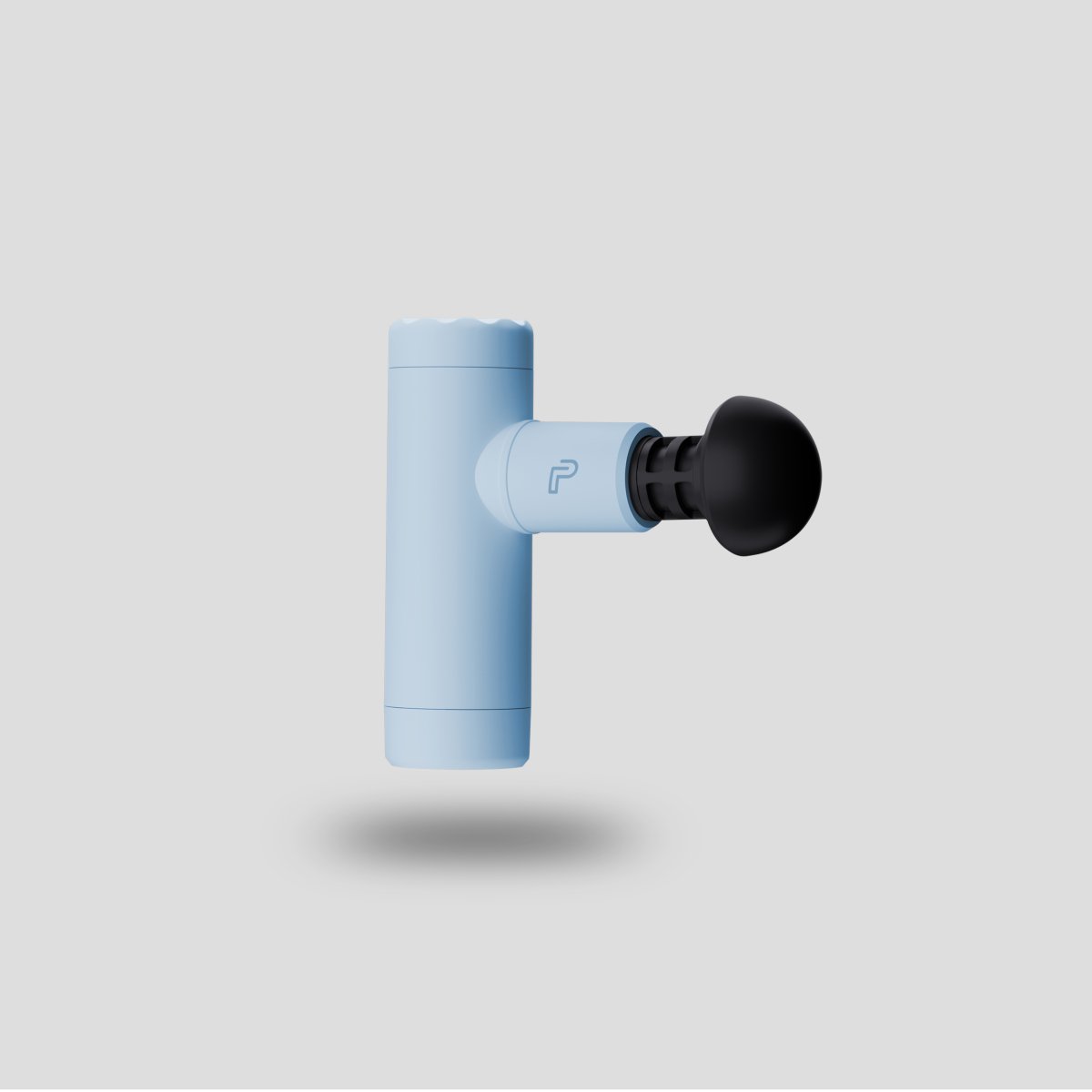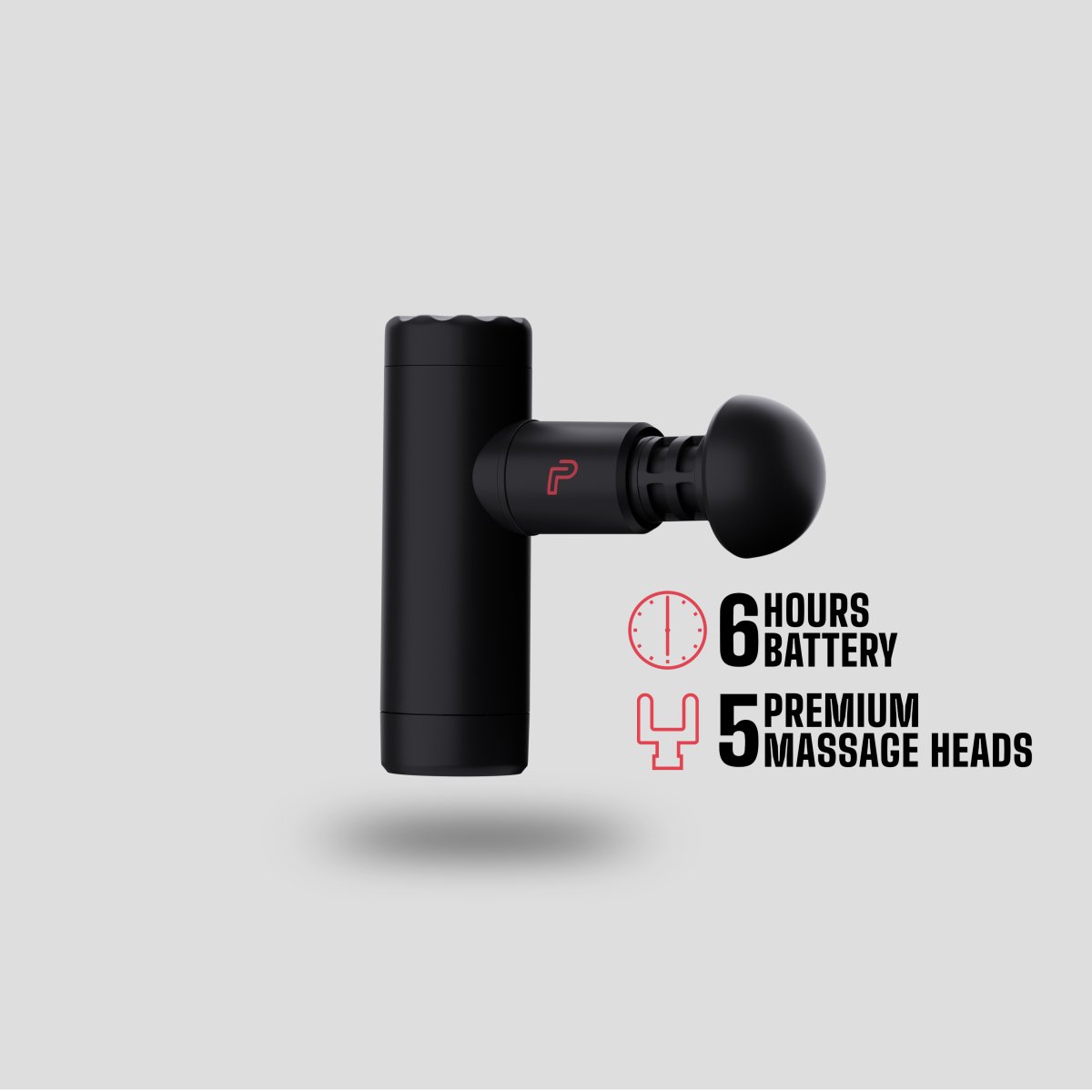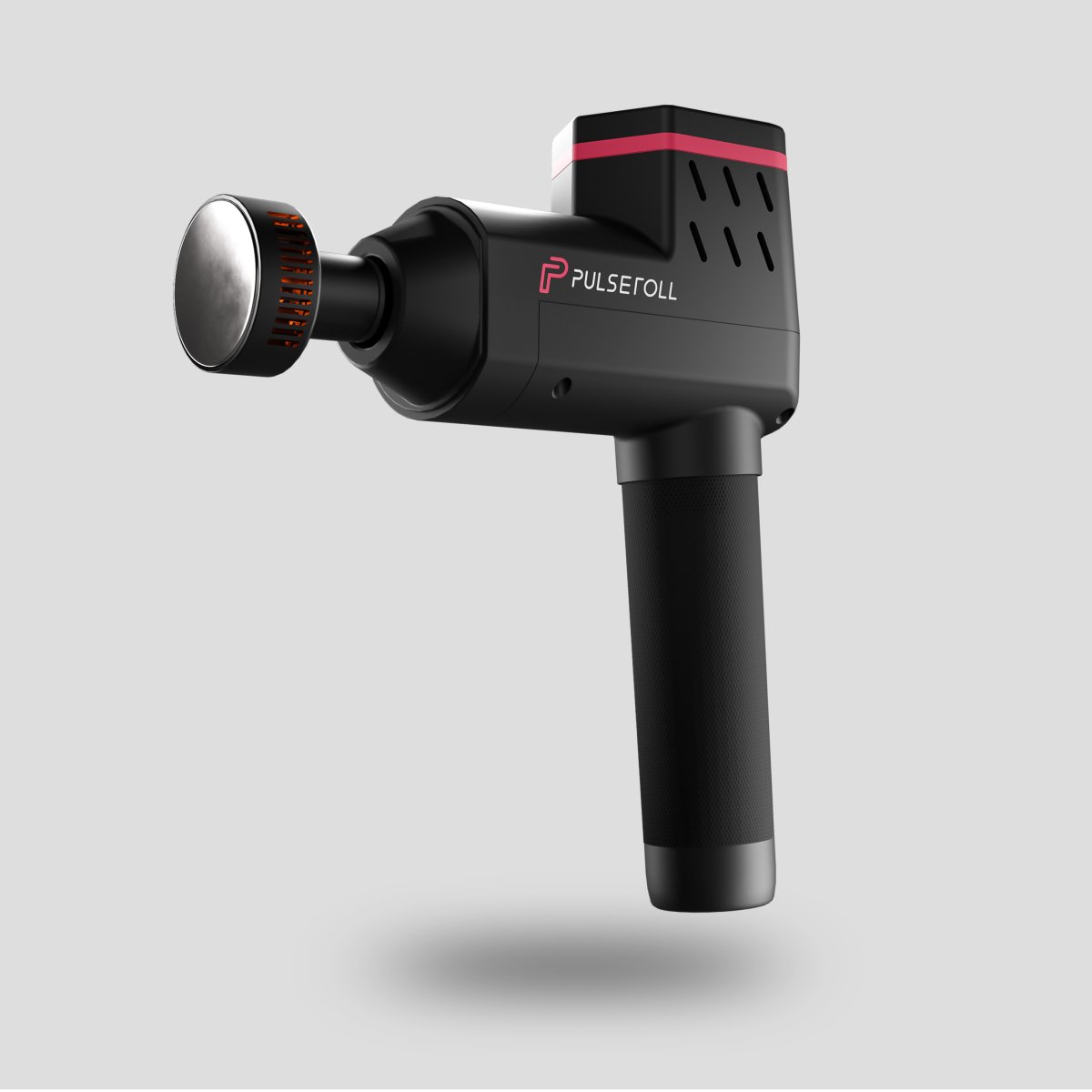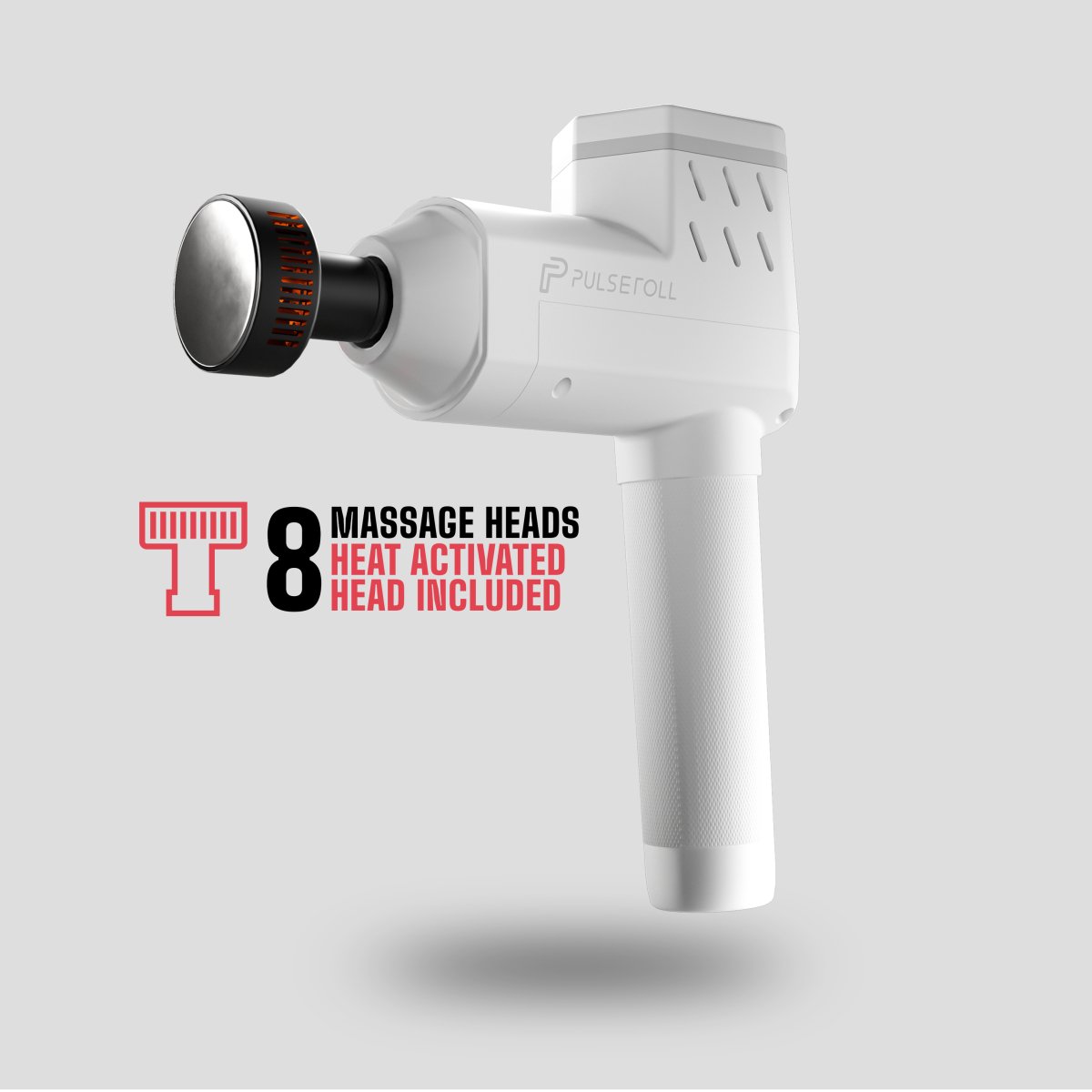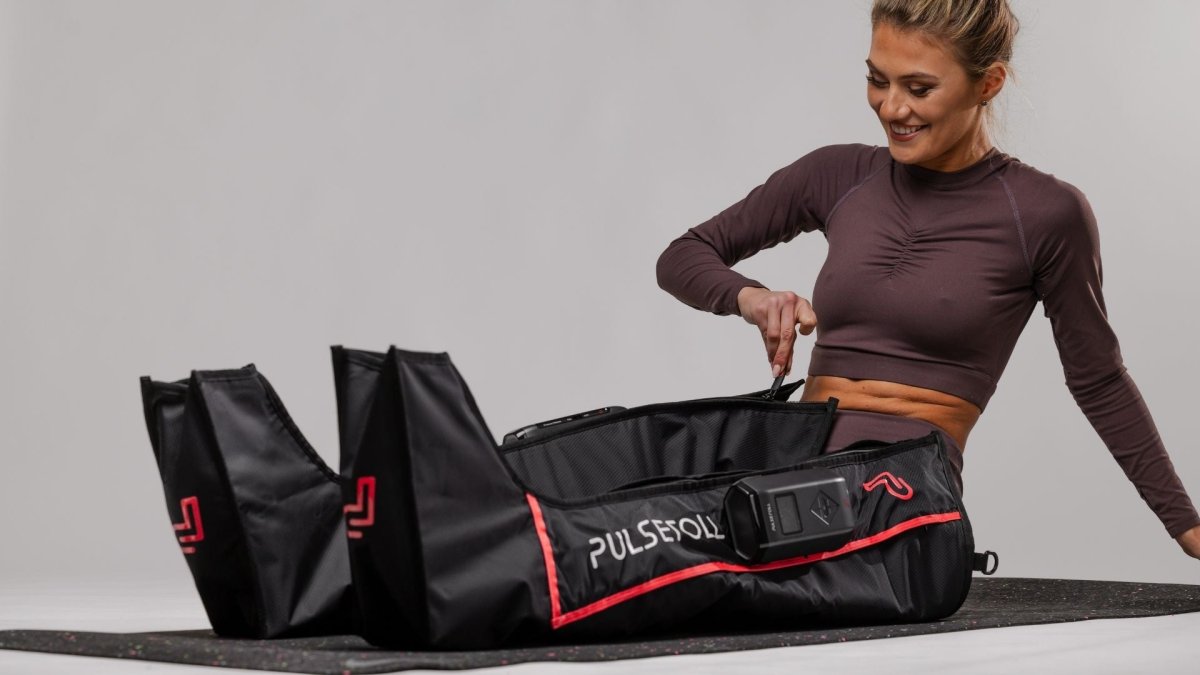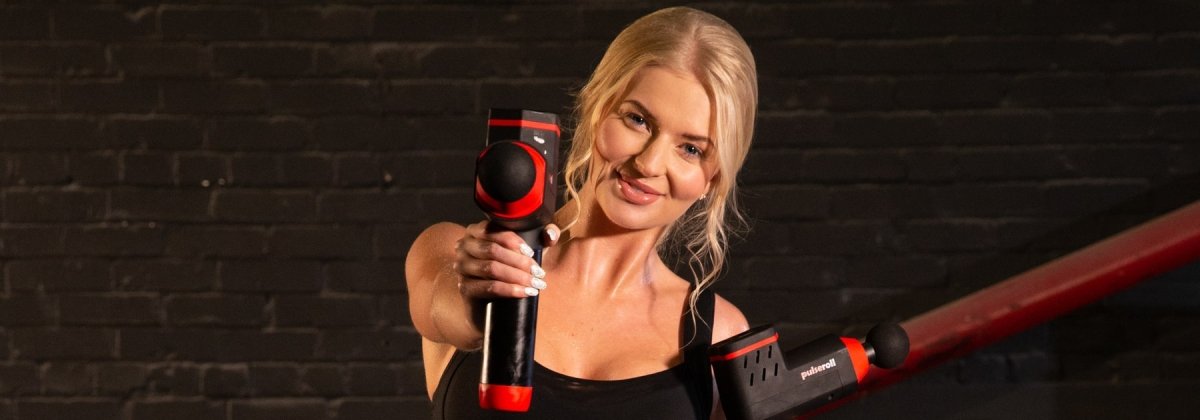Massage guns and other muscle recovery tools, far from being just for athletes, are really an amazingly beneficial addition to anyone’s routine. For example, if you work at an office and spend too many hours sitting, or, on the contrary, have had a long day with barely any chance to sit down, your soft tissues (along with your mental state) may have a lot to gain from some well-deserved attention. After all, they don’t call them soft tissues for nothing!
A percussion massage gun is a hand-held self-therapy tool that uses rapid strokes to help to relax the tissues, alleviate muscle soreness, stimulate blood flow, and improve flexibility and mobility. Check out our top 10 massage gun benefits for more details.
Our Pulseroll Pro Massage Gun comes with 6 different attachment heads, all intended for different uses, so that you can tackle every situation and be specific in the way you address every body part and purpose. You’ll get faster results if you choose the right attachment.
They may, however, look at first glance like quite a random assortment of weirdly shaped instruments. So, what do they each do?
This is our massage gun attachment guide, where you can find out how to use massage gun heads.

Big round head
This attachment is predominantly used for large muscle groups, like the glutes, hamstrings, and quads. It covers a larger surface area, enabling you to target the big muscle groups effectively. After using the big round head on a large area, you can use the smaller heads to address particular spots that may feel sore or tight.
Small round head
Perfect for overall use on large and small muscle groups. This one is usually the go-to attachment for general use. It’s a very versatile tool.
Flat head
This particular massage gun attachment is perfect for shoulder blades and IT bands, as well as being great for full body massage and relaxation. It’s been precisely engineered for smaller surface areas and is very effective for denser muscle groups as well.
Bullet head
Used for pinpoint muscle treatment and smaller muscle groups like hands and feet, it allows you to dig deep into the tissues. It’s great for trigger point massage, but shouldn’t be used for longer than 15 seconds per muscle area. For this very same reason, it probably won’t be the one you use the most.
Spinal head
This head is immediately recognisable due to its characteristic forked shape. It’s used mostly for trigger points and the lower back. It can be used on the sides of the spine, but always be careful to not use it directly on the bone.
Pneumatic head
This is used mostly for tender or sensitive areas but is great for use all over the body. It’s more suitable for sensitive muscle groups and soft tissue relaxation. Being the softest and most flexible of all the attachments, it is the safest to use close to bones or delicate areas. This also means that it may be very useful for non-flat parts of the body, as it adapts to the targeted surfaces better than any other head.
The massage gun attachment uses

When using your Pro Massage Gun, you can simply choose one of the 6 available attachment heads, then place the gun on the desired muscle area and let the pulses do the work.
You should move the massage gun slowly around the muscle area in a circular motion and change the speed setting to suit your needs, with the highest speed reaching 3300 RPM. Start with a slow speed setting and increase it over time. But the most important rule is an easy one: to pay attention to your body and not ignore your instincts. If it’s uncomfortable or painful, stop. If it feels good, it most likely is good.
Warning: Never use the massage gun directly on the joints or bones.
See our article ‘How long is it safe to use a massage gun?’ for more details on the precautions you should have in mind when using a massage gun.
Now that you know how to use all the massage gun heads, you’re ready to go! Don’t forget to experiment and find out what feels best and works best for you.
Check out the full range of Pulseroll muscle recovery tools, including the Massage Gun, in our shopping hub!






